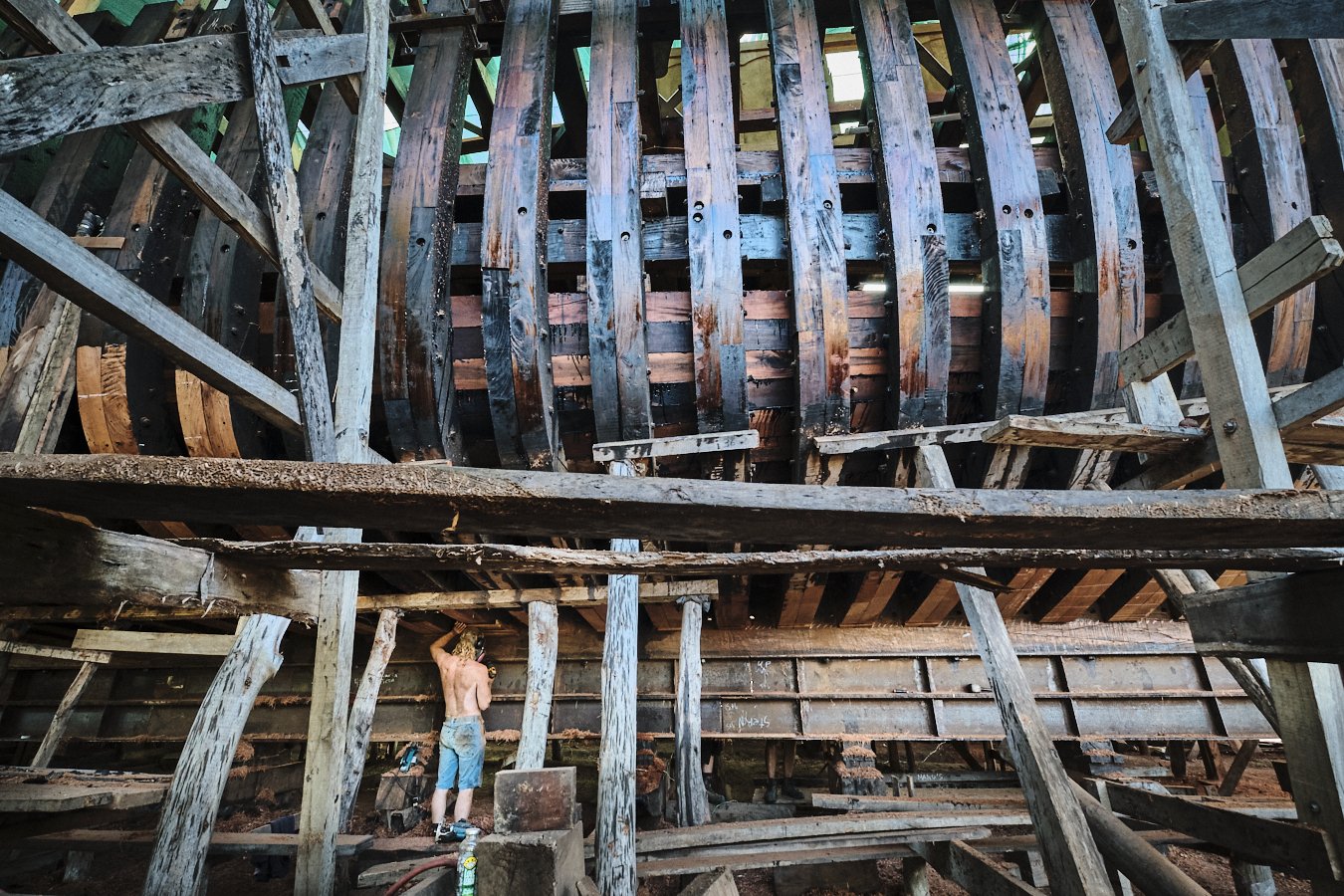BBC Features Sailcargo In Clean Shipping Solutions
Reporting By Katherine Latham. First published on the BBC on January 6, 2023. Excerpt Below.
The shipping industry has plans to slash CO2 emissions by 50%. About 90% of global trade is transported by sea. The international maritime sector is responsible for almost 3% of total global emissions. If it were a country, it would be the world's sixth highest emitter.
In 2018, the International Maritime Organization (IMO) set a target of 2050 to slash emissions by 50% compared with 2008. However, experts argue that to limit global warming to 1.5C, the target should be 100%.
So, can the shipping industry clean up its act?
Over short distances, boats can be powered by battery, but for international shipping green hydrogen-based fuels are tipped to play a central role in decarbonising the industry. Moving to hydrogen, however, would require changes to fuelling infrastructure. Storage and cost are significant challenges, as well as the adaptation of the ships themselves to enable them to run on hydrogen. To tackle the problem, some researchers are working on radical technologies.
Researchers at Cambridge University are experimenting with floating fuel production. Experts at Cambridge University say syngas produced by artificial photosynthesis could bridge the gap between fossil fuels and clean hydrogen.
Researchers at Cambridge University are experimenting with floating fuel production. Original photo on BBC from Cambridge University.
"Syngas, a mixture of hydrogen and carbon monoxide, is an important industrial intermediate in the production of conventional fuels like gasoline," says Dr Virgil Andrei, research fellow at the University of Cambridge. "If we can produce syngas sustainably, we won't need fossil resources."
Tourists chatter as a punt floats down the River Cam, under the Bridge of Sighs, past St John's College. Sunlight sparkles on the water, the surface speckled with the golds and reds of autumn leaves. One leaf looks out of place. Dr Andrei shields it from a hungry looking duck. "It won't eat it," he assures me. The plastic cover, he says, should be strong enough to prevent animals from consuming this unusual leaf.
"In fact, covering the water surface up to a certain extent, around 50%, does not affect wildlife, and may even provide benefits - like preventing water evaporation from irrigation canals," Dr Andrei adds.
Dr Andrei and his team at Cambridge University have developed artificial leaves that generate clean fuels from sunlight and water, and could eventually operate on a large scale at sea.
The "leaves" have two light absorbers which harvest sunlight. Original photo on BBC provided by Cambridge University.
The leaves have two kinds of light absorbers which harvest sunlight. One uses light from the blue end of the spectrum to produce oxygen from the water. The other uses light from the red end of the spectrum to convert carbon dioxide and protons to syngas or hydrogen.
The ultra-thin, flexible devices are low-cost, autonomous and float, says Dr Andrei, meaning they could be used to generate a sustainable alternative to petrol without taking up space on land.
"You could have decentralised fuel production in remote areas - on shorelines, on lakes, near islands. We could have refuelling stations for ships."
This is the first time that clean fuel has been generated on water and, if scaled up, the artificial leaves could be used on polluted waterways, in ports or at sea - and reduce the global shipping industry's reliance on fossil fuels.
While that technology is still a long way from being deployed, others are reviving ways to ship cargo that have been around for centuries.
Sailcargo is building a new ship at its boatyard in Costa Rica. Julia Milmore is chief executive of Sailcargo, which was founded in 2014 in the mangroves of Costa Rica.
Its flagship, the Ceiba, is being built at its shipyard in the Central American nation. It is due to set sail in 2024. The 45m long ship has three masts, which makes it a schooner in the sailing world. It can carry 250 tonnes of cargo, which is roughly equivalent to nine standard shipping containers.
"Once built, she will be the largest clean cargo vessel in the world," says Ms Milmore.
"The crew know that with every strike of a hammer or pull of a rope they are contributing to a much larger mission - bigger than the ship itself." Julia Milmore says smaller ships can avoid congested ports
Another refurbished vessel, the Vega Gamley, bought from a Swedish family who had owned the ship for decades, is ready to transport Fair Trade organic coffee between the Americas. Travelling between Santa Marta, Colombia and New Jersey in the US, the Vega will make up to eight trips per year. Each voyage will take 16 days, with a further six days in ports.
The Vega Gamley is ready to transport Fair Trade coffee between the Americas. "We can't compete with the speed of fossil-fuelled transport, but it only takes one look at the map of active ships to see the weeks-long waiting times outside of ports across the world," says Ms Milmore.
Her sailing ships can only carry a tiny fraction of the cargo of a modern container ship - some of which carry more than 20,000 containers. But Ms Milmore says her smaller boats can avoid the bottlenecks that plague the shipping industry.
"Consumerism has grown beyond the infrastructure. Our ships are able to bypass this due to our flexible unloading and loading operations. We are detaching ourselves from the market that has let our environment down."
Read the original article HERE




